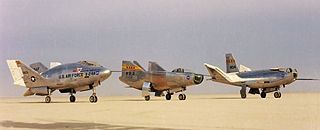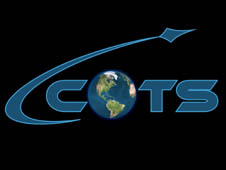
The Buran program, also known as the "VKK Space Orbiter program", was a Soviet and later Russian reusable spacecraft project that began in 1974 at the Central Aerohydrodynamic Institute in Moscow and was formally suspended in 1993. In addition to being the designation for the whole Soviet/Russian reusable spacecraft project, Buran was also the name given to Orbiter K1, which completed one uncrewed spaceflight in 1988 and was the only Soviet reusable spacecraft to be launched into space. The Buran-class orbiters used the expendable Energia rocket as a launch vehicle. Unlike the Space Shuttle, Buran had a capability of flying uncrewed missions, as well as performing fully automated landings.

The Space Shuttle program was the fourth human spaceflight program carried out by the U.S. National Aeronautics and Space Administration (NASA), which accomplished routine transportation for Earth-to-orbit crew and cargo from 1981 to 2011. Its official name, Space Transportation System (STS), was taken from a 1969 plan for a system of reusable spacecraft of which it was the only item funded for development. It flew 135 missions and carried 355 astronauts from 16 countries, many on multiple trips.

A lifting body is a fixed-wing aircraft or spacecraft configuration in which the body itself produces lift. In contrast to a flying wing, which is a wing with minimal or no conventional fuselage, a lifting body can be thought of as a fuselage with little or no conventional wing. Whereas a flying wing seeks to maximize cruise efficiency at subsonic speeds by eliminating non-lifting surfaces, lifting bodies generally minimize the drag and structure of a wing for subsonic, supersonic and hypersonic flight, or spacecraft re-entry. All of these flight regimes pose challenges for proper flight safety.

Hermes was a proposed spaceplane designed by the French Centre National d'Études Spatiales (CNES) in 1975, and later by the European Space Agency (ESA). It was superficially similar to the American Boeing X-20 Dyna-Soar and the larger Space Shuttle.

A spaceplane is a vehicle that can fly and glide like an aircraft in Earth's atmosphere and maneuver like a spacecraft in outer space. To do so, spaceplanes must incorporate features of both aircraft and spacecraft. Orbital spaceplanes tend to be more similar to conventional spacecraft, while sub-orbital spaceplanes tend to be more similar to fixed-wing aircraft. All spaceplanes to date have been rocket-powered but then landed as unpowered gliders.

The Boeing X-20 Dyna-Soar was a United States Air Force (USAF) program to develop a spaceplane that could be used for a variety of military missions, including aerial reconnaissance, bombing, space rescue, satellite maintenance, and as a space interceptor to sabotage enemy satellites. The program ran from October 24, 1957, to December 10, 1963, cost US$660 million, and was cancelled just after spacecraft construction had begun.

The Lockheed Martin X-33 was a proposed uncrewed, sub-scale technology demonstrator suborbital spaceplane that was developed for a period in the 1990s. The X-33 was a technology demonstrator for the VentureStar orbital spaceplane, which was planned to be a next-generation, commercially operated reusable launch vehicle. The X-33 would flight-test a range of technologies that NASA believed it needed for single-stage-to-orbit reusable launch vehicles, such as metallic thermal protection systems, composite cryogenic fuel tanks for liquid hydrogen, the aerospike engine, autonomous (uncrewed) flight control, rapid flight turn-around times through streamlined operations, and its lifting body aerodynamics.

Dream Chaser is an American reusable lifting-body spaceplane being developed by Sierra Nevada Corporation (SNC) Space Systems. Originally intended as a crewed vehicle, the Dream Chaser Space System is set to be produced after the cargo variant, Dream Chaser Cargo System, is operational. The crewed variant is planned to carry up to seven people and cargo to and from low Earth orbit.

The Orbital Space Plane (OSP) program was a NASA spaceplane concept in the early 2000s designed to support the International Space Station requirements for crew rescue, crew transport and contingency cargo transport. It was part of the Space Launch Initiative.

Shuttle-derived vehicles (SDV) are space launch vehicles and spacecraft that use components, technology, and infrastructure originally developed for the Space Shuttle program.

Commercial Orbital Transportation Services (COTS) was a NASA program to coordinate the development of vehicles for the delivery of crew and cargo to the International Space Station by private companies. The program was announced on January 18, 2006 and successfully flew all cargo demonstration flights by September 2013, when the program ended.

The Intermediate eXperimental Vehicle (IXV) is a European Space Agency (ESA) experimental suborbital re-entry vehicle. It was developed to serve as a prototype lifting body orbital return vehicle to validate the ESA's work in the field of reusable orbital return vehicles.

The HL-20 Personnel Launch System is a NASA spaceplane concept for crewed orbital missions studied by NASA's Langley Research Center around 1990. It was envisaged as a lifting body re-entry vehicle similar to the Soviet BOR-4 spaceplane design. Its stated goals were to achieve low operational costs, improved flight safety, and a possibility of landing on conventional runways. No flight hardware was built.

Space Act Agreements are a type of legal agreement specified in the National Aeronautics and Space Act of 1958 that uniquely empowers the National Aeronautics and Space Administration (NASA) to work with any entity that enables fulfillment of the Administration's mandate. As recently as the 2010 authorization of :

Development of the Commercial Crew Program began in the second round of the Commercial Crew Development (CCDev) program, which was rescoped from a technology development program for human spaceflight to a competitive development program that would produce the spacecraft to be used in the Commercial Crew Program to provide crew transportation services to and from the International Space Station (ISS). To implement the program NASA awarded a series of competitive fixed-price contracts to private vendors starting in 2011. Operational contracts to fly astronauts were awarded in September 2014 to SpaceX and Boeing. Each company performed an uncrewed orbital test flight in 2019, and operational flights started in November 2020.

Liberty was a 2011 launch vehicle concept proposed by Alliant Techsystems (ATK) and Astrium for phase 2 of the NASA Commercial Crew Development (CCDev) program intended to stimulate development of privately operated crew vehicles to low Earth orbit.
Aircraft can have different ways to take off and land. Conventional airplanes accelerate along the ground until sufficient lift is generated for takeoff, and reverse the process to land. Some airplanes can take off at low speed, this being a short takeoff. Some aircraft such as helicopters and Harrier jump jets can take off and land vertically. Rockets also usually take off vertically, but some designs can land horizontally.

The HL-42 was a proposed scaled-up version of the HL-20 re-usable crewed spaceplane design, which had been developed from 1983 to 1991 at NASA's Langley Research Center but never flown. Like the HL-20, the HL-42 would have been launched into low earth orbit mounted on top of a two-stage expendable rocket. At the end of the mission it would have re-entered and glided to a runway landing.

During the lifetime of Space Shuttle, Rockwell International and many other organizations studied various Space Shuttle designs. These studies included different ways to increase shuttle payload capability, crew capacity, and developing standalone reusable launch vehicles. A large focus of the program was towards new shuttle boosters and an upgrade to the external tank but also looked to expand NASA's ability to launch deep space missions and build large modular space stations. Many of these concepts and studies would shape the concepts and programs of the 2000s such as Constellation, Orbital Space Plane Program, and Artemis program.

SNC Demo-1, also known as Dream Chaser Demo-1, is the planned first flight of the Sierra Nevada robotic resupply spacecraft Dream Chaser to the International Space Station (ISS) under the CRS-2 contract with NASA. The demonstration mission is planned for launch in Summer 2023 on the second flight of the ULA Vulcan Centaur rocket. Sierra Nevada Corporation (SNC) developed a new reusable spacecraft to provide commercial cargo resupply services to the International Space Station (ISS), based on decades of lifting body programs. Under the Commercial Orbital Transportation System (COTS) program, SNC designed Dream Chaser with industrial partner Lockheed Martin. SNC also designed the accompanying Shooting Star cargo module with subcontractor Applied Composites. At the end of mission, the Shooting Star will destructively reenter the atmosphere and the Dream Chaser will land at the Kennedy Space Center's Shuttle Landing Facility.




















